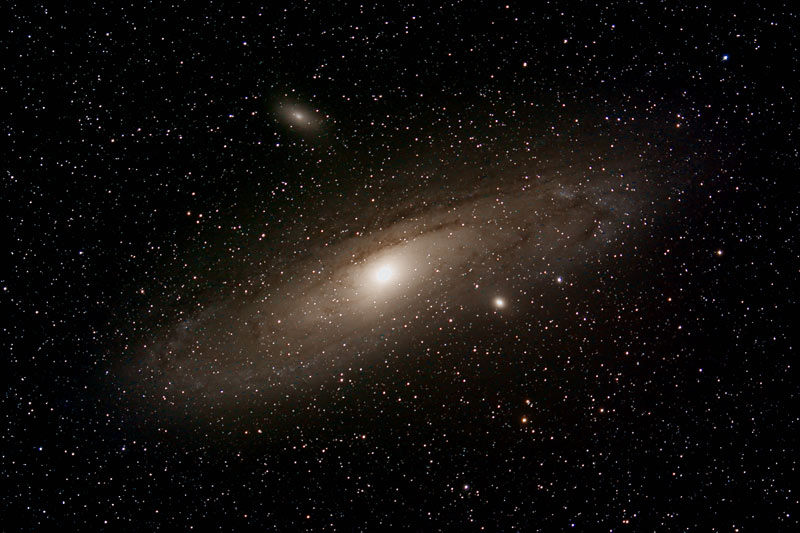
M31 Great Andromeda Galaxy (NGC 224)
With M32 (NGC 221) & M110 (NGC 205)
M31 is one of the most famous and best known galaxies in the sky. This is primarily because it is our nearest (approx. 2.5 million Light Years) galactic neighbor not counting the various dwarf satellite galaxies of the Milky Way and also because it is the galaxy in which Edwin Hubble discovered a Cepheid variable finally proving that "spiral nebulae" were actually galaxies outside of our own. It is quite bright and easily visible in the smallest of telescopes and binoculars and is even easily visible to the naked eye in relatively dark skies. Through many amateur scopes some of the dust lanes are easily visible. This object is so large that it can be a challenge fitting it in the frame of an imager with all but the shortest focal length telescopes especially when trying to get M110 in the same frame and it is easy to get very good photos of M31 through nothing more than a zoom camera lens. M110 is the much smaller oval shaped galaxy above M31 in this image and M32 is the object just below and to the right of M31's nucleus that looks like a very large fuzzy star. These are both satellites of M31 and both of these are also visible in most small telescopes and even in large binoculars. I have seen both in my 25X100 binos.
Details:
Imaged on 9/15/2006 at 12:30 AM Central Time from Fordland, MO
Equipment:
Camera: Canon 300D (unmodified)
at Prime Focus
Imaging Scope: 80mm F7.5 Orion ED Apo refractor with William Optics .8x Focal Reducer/Field Flattener
Guide Scope: 120mm F5.0 Orion refractor
Guiding: GuideDog software and SAC-7b camera and TechnoPlus LX200 emulator
Mount: Losmandy CG-11
Image Information:Imaging Scope: 80mm F7.5 Orion ED Apo refractor with William Optics .8x Focal Reducer/Field Flattener
Guide Scope: 120mm F5.0 Orion refractor
Guiding: GuideDog software and SAC-7b camera and TechnoPlus LX200 emulator
Mount: Losmandy CG-11
